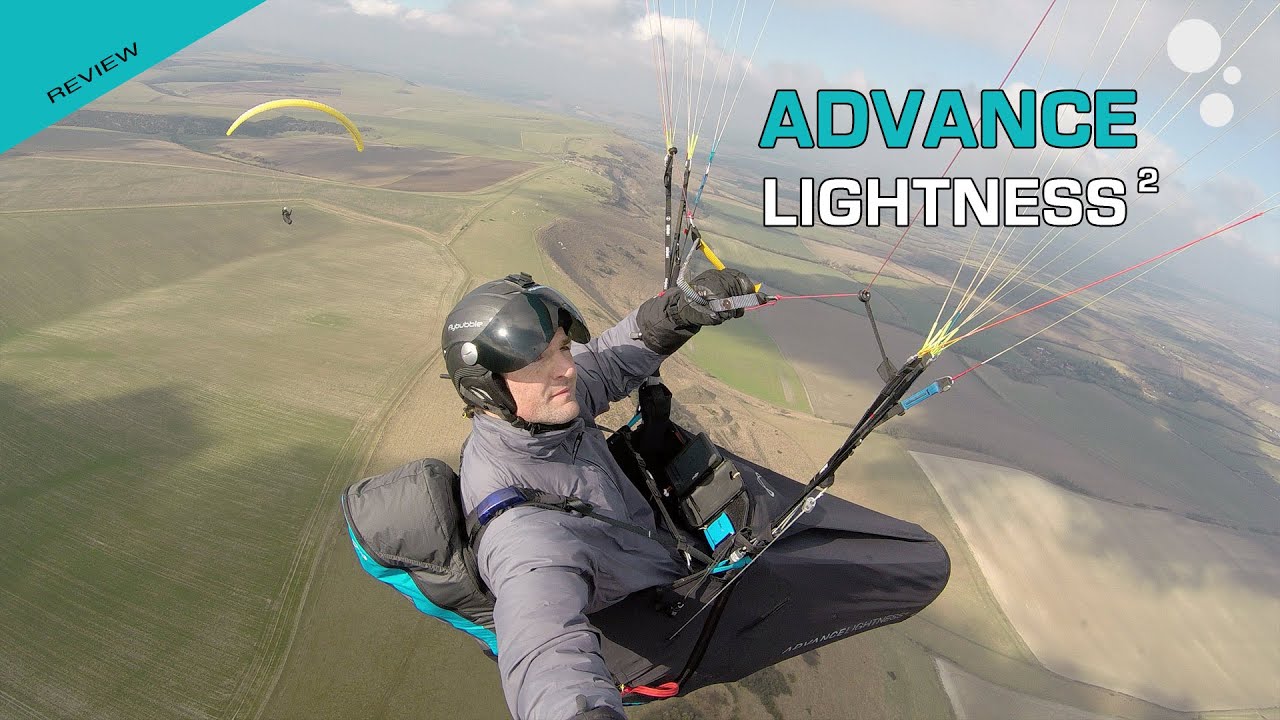
Advance LIGHTNESS 2 pod paragliding harness reviews by Flybubble's crew members Carlo, Nancy and Greg.
Advance LIGHTNESS 2 review by Carlo Borsattino, Flybubble
Having had the Lightness 2 for nearly a year and had some of my longest and best-ever flights in it, with over 150 hours airtime, I know it very well. I've flown it in a variety of conditions, from super smooth soaring, to moderately turbulent thermaling, to somewhat sporty and spicy at times. Thermaling and cross country flying is what I love most! Although I'm no acro pilot, I enjoy a bit of wagga now and again. I've also done plenty of ground handling and kiting across UK hills on fickle light wind thermic days.
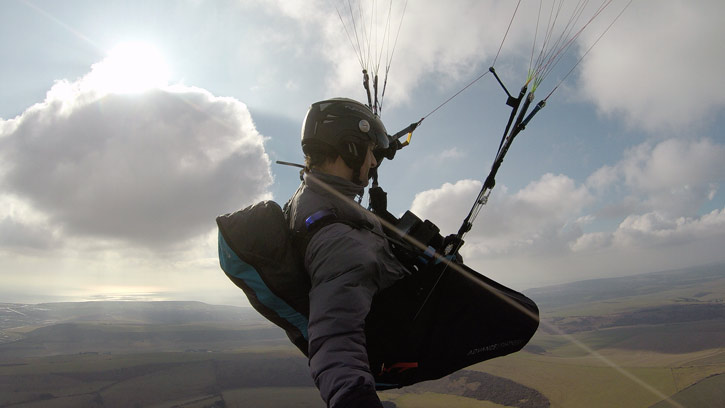
The Lightness 2 is beautifully, intelligently made; both extremely elegant to look at and highly practical to use. It fits perfectly into the Lightpack 2 rucksack it comes with which has useful features and is very comfortable to carry. I chose the 90L Lightpack 2 so I could fit all my kit in more easily - especially since I'm often changing wings for testing and reviewing. Lightweight wings like the Advance Omega Xalps and Gin GTO 2 are far more compact than normal-weight wings, so for these the 82L is more than adequate. When comparing different normal weight wings, some are significantly more voluminous than others; some will be fine in the 82L, others will want the 90L. Other factors include size of equipment (S, M, L), what type of helmet you fly with, full- or open- face, and how good your packing technique is! If in doubt, go for the larger 90 L size - it's still much smaller than most standard paraglider rucksacks.
Once I got the knack of handling the two metal pass-though buckles (versus auto clip buckles) for the combined leg and waist straps and operating the rather Germanically named 'closure remember system', neither of which took very long to get used to, it's quick and easy getting in and out of the harness.
I personally prefer the combined leg and waist straps system to having them separate, mainly because it's easier to run without straps going over your thighs; it's also less buckles to do up and undo each time.
Although pass-though buckles are slightly fiddlier, I like that there's no mechanism to go wrong.

The side pockets in the speedbag are useful for stowing your gloves in whilst clipping in, so you don't get them wet on soggy grass days or slushy snow, ready to grab easily and put on once you're done. They're also useful for snack bars or a light compact camera, each with a safety loop to attach a lanyard to.
I've found getting in and out of the speedbag of the Lightness 2 generally easy and unproblematic, even with flying boots (Hanwag Super Fly)*.
In the air the Lightness 2 is supremely comfortable. It has the best comfort:safety:ease:weight ratio of any harness I've tried. I've flown in harnesses that were lighter but certainly not as comfortable or user-friendly. I have flown in harnesses which were as comfortable, but they weighed more - generally a lot more! The closest contender for me is the Sup'Air Delight 2, which I highly recommend pilots also take a look at. Pilots should of course always bear in mind that fit is a highly personal thing!
Whilst a supine harness like the Lightness 2 wouldn't suit acro pilots (who prefer an upright position) I've found it surprisingly good for moderate freestyle-wagga, such as big wing-overs, dolphining, asymmetric spirals etc.
The flight deck set up on the Lightness 2 is very nice; similar to the Impress 3 but slightly stripped down. Advance have removed the lower 'supporting panel' on the Lightness 2, which means that it doesn't hold as much weight so well - you need to add a line to link the bottom of the cockpit to your chest strap. The Delight 2's flight deck is better in this regard.
Another minor criticism is that the hole for the hydration tube is rather small, making it rather fiddly to pass the bite valve through.
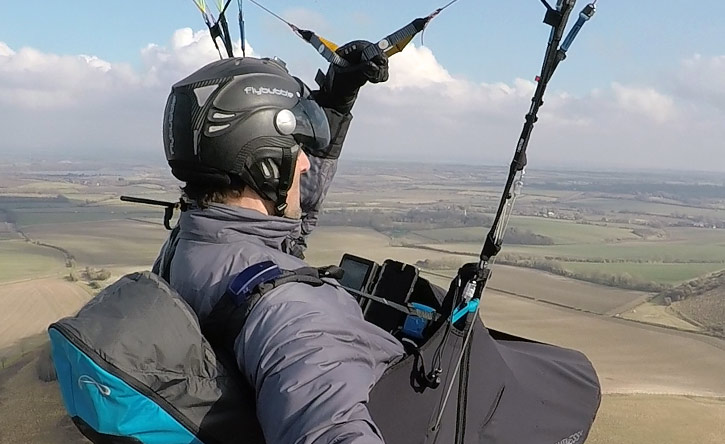
The Compressbag light is a very nice added feature, included in the package, and certainly helps with packing your wing to the right size and shape to best fit the Lightpack 2 rucksack. However, since I find using a concertina packing bag both useful for packing and desirable for wing longevity, I don't use it.
The reserve holding and deployment system is excellent; a nice development from the Impress 3. The space where the reserve goes is big enough for all lightweight solo reserve systems I've seen, and most normal weight ones too. Some more voluminous systems will not fit. Since the harness has been designed for pilots seeking light weight and efficient equipment, it would not make sense to make it heavier and more bulky just to accommodate bulky reserves! The closing/opening system is superb, although some may find they need to refer to the manual to work out how to do it up the first time. The handle sits in a good position, easy to grab and release yet 'smooth' enough not to catch on things (e.g. lines, bushes).
It's wonderful to be able to fly for several hours in a beautifully designed, nicely streamlined harness weighing less than 3 kilos and still be comfortable! The low weight and pack volume is especially appreciated when walking up to take-off, standing around waiting for the next thermal and walking/kiting back up the slope on light wind fickle days, and hiking out from the boonies after long XC adventures! :)
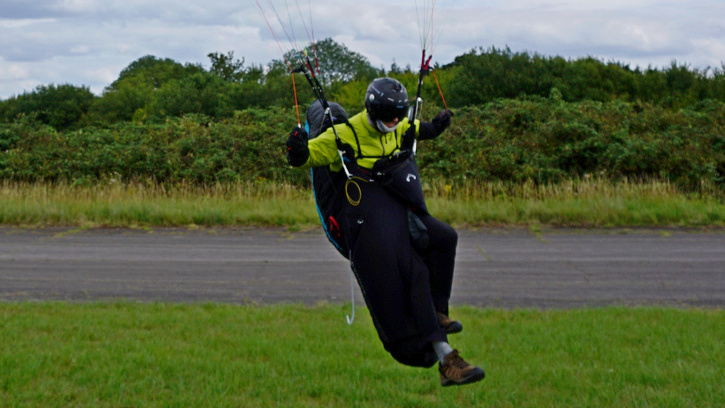
* Tip: Some pilots find it hard to get in to the speedbag (leg faring) of any pod harness, usually due to a lack of flexibility, inconvenient bodily proportions, incorrect technique, poor harness setup or a combination of these factors. A solution for this is to take an appropriate length of bungee cord (strong elastic) and attach it to the inside of the pod on one side, at the bottom near the footplate. At the other, free end of the bungee cord either make a loop and put this around the front of your shoe, or tie a small knot and thread this into your shoe laces, on the same side, to hold it in place. Now when you launch you can extend the foot with the bungee cord attached to extend the pod, making it easier to put the other foot in to the pod - and you're away! Don't forget to remove the bungee from your foot when you unclip from your harness, before you walk away from it (unless you want to amuse onlookers).
Advance LIGHTNESS 2 by Nancy Elliott, Flybubble

I'm 5ft 10 and have long legs - with some manufacturers to get the support under my legs with a seat plate harness I needed a Large, but then it was too wide so I didn't have good contact and movement with the harness. When I first tried a harness without a seat plate (Advance Impress 3) I immediately felt that it fitted me perfectly. The lack of seat plate meant that the harness moulded around my body!
The Lightness 2 was a natural progression from the Impress 3, it has all the comfort of the Impress 3 and is a lot lighter. Advance have chosen materials that are still durable but lightweight, although care does need to be taken with all lightweight products, so I would not recommend it to everyone. There is still plenty of space in the back of the harness for all I need to carry and a good few pockets for other essentials (like snack bars!)
The dedicated Lightpack 2 rucksack is the perfect size, I went with the 90L as I first thought that there was no way I'd get my kit in anything smaller and at first it was a squeeze until I got used to how to pack it. Now I could probably use the 82L no trouble!

The Lightness 2 is a compromise on back protection and not everyone will get on with a hammock style harness so my recommendation is to come and try it first. Especially if you are looking to get your first pod harness a proper harness fitting appointment to get your harness set up correctly is key.
I choose not to use the Compressbag light (or any other inner bag) as I prefer some help with concertina packing so I use the Ozone Saucisse Lite (one of the lightest) to compliment my kit.
I really love my Lightness 2, it is a real joy to fly!
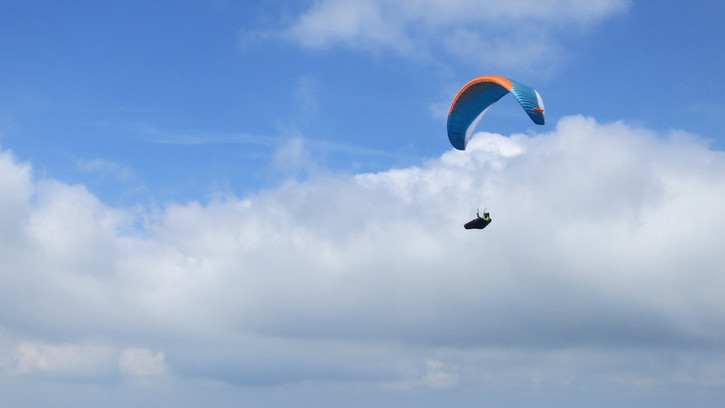
Advance LIGHTNESS 2 review by Greg Hamerton, Flybubble
I flew the original Advance Lightness for many years, in the Alps, South Africa and the UK, putting it through fairly normal XC use. When I came to sell it, it was still in good condition and fetched a high price. So when the Lightness 2 came out, I was sorely tempted but because I'm a bivi-flying nut, the extra weight and apparent lack of packing space made me opt for a more specialist harness. I've noticed the growing number of Lightness 2 harnesses in the air around me and can't help feeling I've missed out. They look really good in the air.

At last I've got my hands on one to inspect, and the bonus of doing the review now is the benefit of inspecting a used harness after one season of XC (and it's not just any harness - this is Carlo Borsattino's, so it was used to win the 2015 UK XC league! This means it's been through many flights, launch attempts and kiting use.) There is hardly any wear visible, and it is limited to minor fluffing spots on areas that caught some exposed hook and loop fastener from instruments. Even the foot well looks undamaged (where boot heels scuff back and forward on the speedbar).
Unlike the original Lightness, you can clip in like a standard harness - no more muddy-boot step-through wiggle. This offers another distinct advantage: when coming down under reserve, in strong winds or water landings, you can actually unclip your straps if you want to, to avoid dragging. Not everyone's choice, and surely risky, but it's nice to have the option. For most pilots, it just makes kitting up very simple. The pass-through buckles are easy to operate, and failsafe.
Once seated in the harness, the attention to detail becomes obvious: the pod closure system; the buckles and chest strap adjustment; the Ronstan speedbar pulleys; the little touches like the tilted (aerodynamic) cockpit pocket and a small hole for the relief system. It has a finished look that hints at thoughtful R&D.
[IMAGE]
I can't imagine how it could be more comfortable. After hanging around for ages, it still feels perfect. I could watch cumulus clouds drift by forever in this hammock. If you're an odd size, you can even mix-and-match elements to get the right fit, as the pod section is easily interchangeable. The Advance size guide put me in the bottom of the range for the M, which was accurate.
My Syride and phone sat comfortably on the minimalistic 'instrument ridge'. There is a detachable instrument panel provided for those with larger technology requirements. Unlike the tricky balancing act of some systems, the Lightness 2 cockpit presented the instruments in an ideal position. However, heavy weight does make the cockpit sag a little. This is easily fixed by looping a line from the bottom of the flight panel to the chest strap, thereby lifting the bottom of your mighty range of instruments.
[IMAGE]
The pod itself is very sleek thanks to a precise cut and somewhat stretchy black fabric. Every manufacturer has their own take on this: the Advance stuff is particularly good, keeping a rumple-free form and holding out very well over time. It also feels reasonably warm. Although Advance warn that extra care must be taken with this kind of lightweight product, I'm confident to say this will last you many years of ordinary use.
The pod has a third line going from the carabiners down to the base of the footplate, which adds Z- bracing. This is a noticeable improvement over conventional two-line support: it limits the footplate movement in space (particularly up and down), giving you a feeling of a solid foundation.
The underseat ballast pocket will take about 5L. It's slightly forward of the centre of gravity: I noticed my feet dipped when weight was loaded in here, so you'll need to adjust your harness slightly. Getting this angle right improves your glide. According to Advance, the underside of the pod should be horizontal. The pod adjustment system (simple lines and knots) is super-easy to adjust and does not slip, unlike some pods.
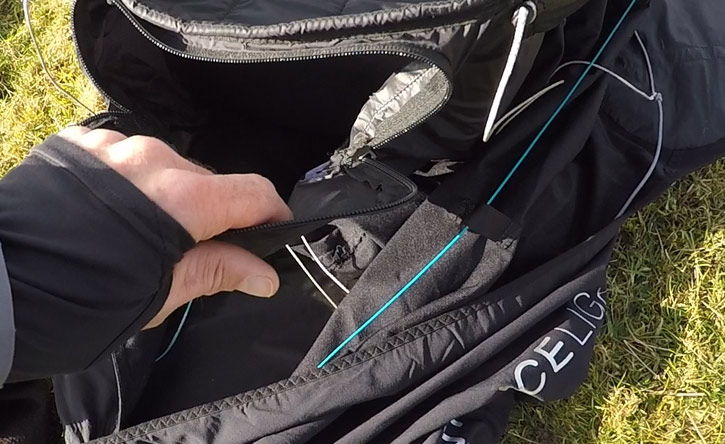
There's a small scoop on the left side which feeds air into the neck area. It's so small that I'd question the real aerodynamic advantage of this, but it surely helps to make the harness more photogenic. For my money, I would have preferred an expanding gusset on the back pocket to accommodate more gear.
The rear storage pocket is large enough for ordinary XC flying, where the backpack (Lightpack 2) and glider bag (Compressbag Light) fit in comfortably. I could also squeeze in a folded foam camping mat, hiking poles and tent poles, but then it was straining at the seams.
For bivi flying, use a ballast bag you can suspend on the carabiners. This fits comfortably across the chest strap, and it frees up the underseat pocket for storage of food and small items. My ultralight tent fitted in the cockpit pocket. There's adequate space for a short bivi trip, but for more extreme environments and longer expeditions you'd need to wear the backpack on your chest to increase storage.
Alternatively, you could remove the foam protector and gain roughly 12L of space (and lose your certified back protection in the process). The access to this area is in a slightly awkward position, and it's not safe to stow any hard items here, but sleeping bag, tent and clothes will do nicely. With all foams removed (including back), you can strip it down to 2341g.
The foam protector (about 30x30x14cm) is the same size as the one found in Skywalk's Range X-Alps, but it felt superior when tested for impact absorption, offering better resistance to compression from more angles. This may be due to a double-bag construction and the inclusion of packaging foam in the walls.
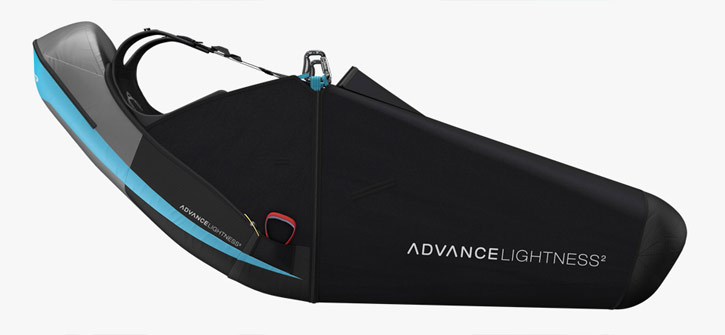
The built in reserve system is especially well designed. The deployment handle sits in an attentive position, and the reserve bridles are stowed under a neat zipped gusset. A small internal shoulder pocket provides tidy stowage for extra bridle loops, like those found on steerable reserves.
However, when you deploy a reserve, you'll have a gap in your back protection: foam under your coccyx, folded backpack against your spine, but nothing in the lumbar region apart from the 2cm comfort foam that covers the whole back area. Reserve landings are often more downwards than backwards, so the main 14cm foam protector is ideally placed, but if this is a concern you could get more protection by choosing a heavier harness with a longer foam pad.
Nonetheless, it offers good protection relative to the competition in this weight bracket and in many impacts you'd have the benefit of the reserve and rolled backpack extending your coverage.
.jpg)
The accompanying backpack (Lightpack 2) has been beefed up slightly compared to the original version (+100g), with a welcome compression strap, extra side pocket, pole holder and slightly sturdier feel. The Advance range of backpacks are very comfortable to carry. The glider bag (Compressbag light) is a convenient way to pack up. Both are included with the Lightness 2, which is unusual in the marketplace and needs to be considered when you raise your eyebrows at the total price.
In this category, designers are working with many constraints: weight, durability, functionality, safety, comfort, performance and appearance. With the Lightness 2, the Advance team have met every challenge with intelligent choices and aesthetic flair, while building on the successful design of its predecessor. It's eye-catching, simple to use yet in no way simplistic, and supremely comfortable. I imagine that the confidence you get from the secure, balanced and refined feeling can only help your flying.
The Lightness 2 is suitable as your first pod harness, it is ideal for a huge range of regular XC pilots and it goes a fair way into satisfying hike-and-fly explorers while avoiding the compromises needed in the ultralight class (sub 2kg). For most pilots, it's as light as you want to go (2950g including carabiners), and it offers everything you need. I can see why it has become another knockout bestseller for Advance.
Advance LIGHTNESS 2 video review by Flybubble
Check out the latest harnesses on Flybubble
Want to see more? There’s no better way to support our efforts than buying from us. We’ll ensure you get great service! Choose from our great range AND enable us to produce more videos and articles to benefit the freeflight community.

